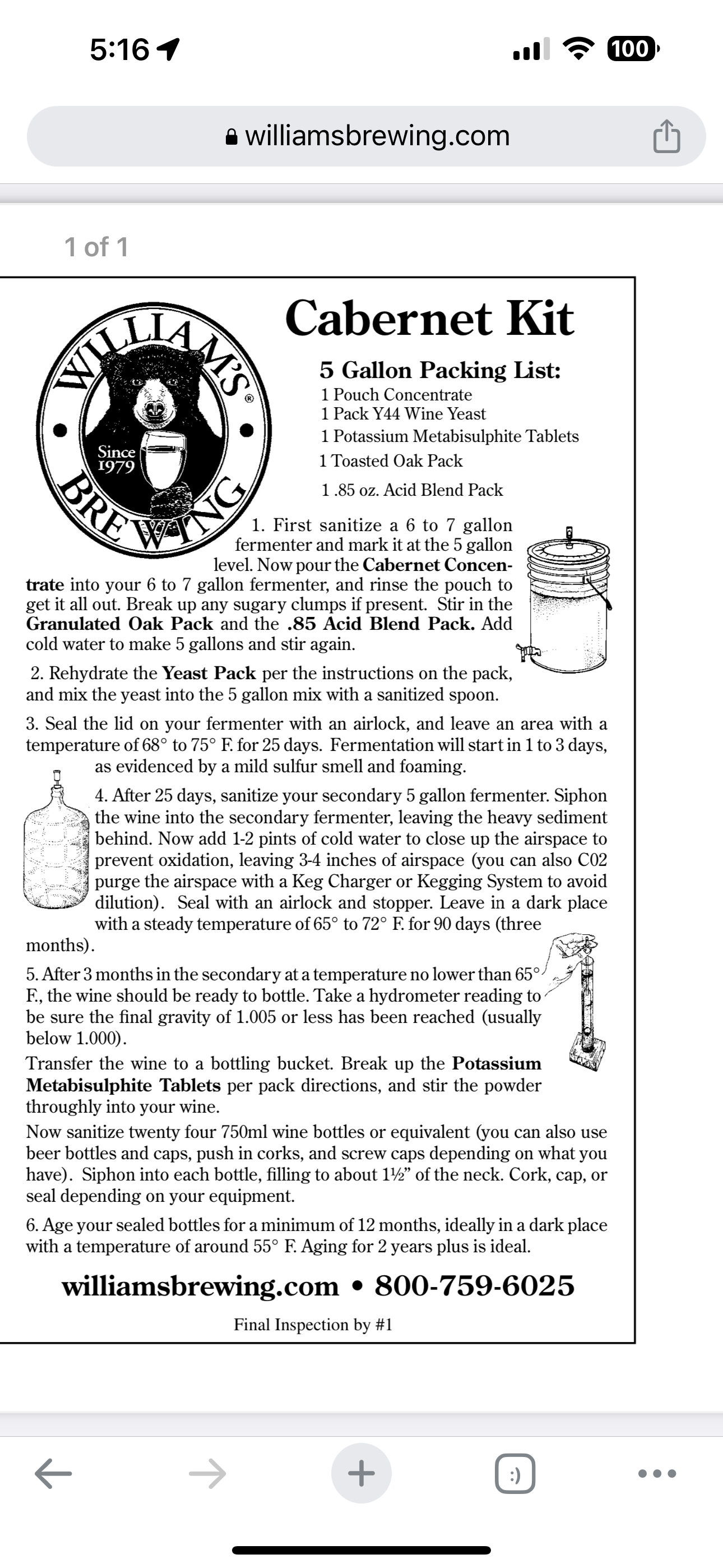I'll start off by saying this is first batch of wine. I've brewed beer for years and decided to get my wife into making wine. We did a wine kit from Williams brewing. Its been in secondary since December. We tried a sample today and she says it's rather sweet. Will the sweetness dye down after bottoming? Or should I possibly add more yeast ? Any other recommendations
You are using an out of date browser. It may not display this or other websites correctly.
You should upgrade or use an alternative browser.
You should upgrade or use an alternative browser.
Sweet wine
- Thread starter Mrcmb
- Start date

Help Support Homebrew Talk - Beer, Wine, Mead, & Cider Brewing Discussion Forum:
This site may earn a commission from merchant affiliate
links, including eBay, Amazon, and others.
We'll need more information to be able to help. What kit, what temp was it fermented at with what yeast, and were any chemicals added that may have stopped fermentation? After this long, it most likely will not dry out any more, so the sweetness will stay about that level if not changed manually, but maybe you can fix it.
these were the instrucstions and here is the link to the kit
https://www.williamsbrewing.com/Hom...ernet-Sauvignon-Wine-Making-Kit-For-5-Gallons
https://www.williamsbrewing.com/Hom...ernet-Sauvignon-Wine-Making-Kit-For-5-Gallons
bernardsmith
Well-Known Member
Do you have any idea what the starting gravity was and what the current gravity is? Pitching more yeast may not simply solve the problem with a stalled fermentation. If that is where you are at - it is entirely possible that your wife is perceiving the wine as sweet but the gravity may suggest that there is no significant residual sugar in the wine.
However, if the gravity has in fact stuck and there is a large amount of sugar left, you upturn the process in the following way - and this upturned process tends to resolve any systemic problems that may have caused the wine to stall.
1. Create a new starter. I would use a champagne yeast because they have been bred to thrive in higher alcohol solutions and you are not pitching the yeast into juice but wine. I might use a cup of water with a teaspoon of sugar (or you could use any fruit juice that does not contain sorbates.
2. Once you see the starter being very active I would add the same volume from the stalled wine.
3. When that is obviously actively fermenting, repeat and add the same total volume to the starter (2 cups) and continue transferring the wine from the stalled vessel to the starter (you will need to pour the "starter" at this point or soon into a larger 5 gallon vessel.. ) until all the wine has been transferred and you see it actively fermenting. If at some stage the wine seems to stop fermenting, you know you have a significant systemic problem and you might call the manufacturer of the kit.
However, if the gravity has in fact stuck and there is a large amount of sugar left, you upturn the process in the following way - and this upturned process tends to resolve any systemic problems that may have caused the wine to stall.
1. Create a new starter. I would use a champagne yeast because they have been bred to thrive in higher alcohol solutions and you are not pitching the yeast into juice but wine. I might use a cup of water with a teaspoon of sugar (or you could use any fruit juice that does not contain sorbates.
2. Once you see the starter being very active I would add the same volume from the stalled wine.
3. When that is obviously actively fermenting, repeat and add the same total volume to the starter (2 cups) and continue transferring the wine from the stalled vessel to the starter (you will need to pour the "starter" at this point or soon into a larger 5 gallon vessel.. ) until all the wine has been transferred and you see it actively fermenting. If at some stage the wine seems to stop fermenting, you know you have a significant systemic problem and you might call the manufacturer of the kit.
Similar threads
- Replies
- 6
- Views
- 567
- Replies
- 7
- Views
- 3K
- Replies
- 7
- Views
- 1K
- Replies
- 0
- Views
- 554


